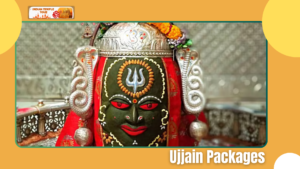Is There a Dress Code for Visiting Tirupati Balaji Temple?

Tirupati Balaji Temple, one of the most revered pilgrimage destinations in India, attracts millions of devotees seeking blessings from Lord Venkateswara. As part of the spiritual experience, adhering to the temple’s rules, including its dress code, is crucial. Following the guidelines not only demonstrates respect but also ensures entry into the sacred premises. This article provides a detailed overview of the dress code for visitors to the Tirupati Balaji Temple and offers insights into planning your visit, especially when availing of a Tirupati Balaji Tour Package.
Why Does Tirupati Balaji Temple Have a Dress Code?
The Tirumala Tirupati Devasthanams (TTD), the governing body of the temple, enforces a dress code to maintain the sanctity and decorum of the sacred space. The temple’s guidelines are rooted in ancient traditions that emphasize modesty, simplicity, and respect for the divine. Wearing traditional attire signifies humility and devotion, fostering a spiritually enriching environment for all visitors.
Dress Code for Men
Male devotees are required to dress in traditional Indian attire. The following options are deemed appropriate:
- Dhoti with Angavastram:
- A dhoti, paired with an angavastram (a shawl draped over the shoulders), is the most recommended outfit.
- White or saffron-colored dhotis are considered ideal, reflecting simplicity and purity.
- Kurta-Pyjama or Shirt with Dhoti:
- Men may also wear a kurta-pyjama set or a shirt with a dhoti.
- Full-Length Pants and Shirt:
- While traditional outfits are preferred, full-length pants and shirts are also acceptable.
- Avoid denim or overly casual wear, as these are considered inappropriate.
Prohibited Attire: Shorts, sleeveless tops, t-shirts with offensive graphics, and casual or revealing clothing are strictly not allowed.
Dress Code for Women
For female devotees, the temple prescribes modest traditional clothing that aligns with cultural norms. The following are acceptable:
- Saree or Half-Saree:
- A saree, draped elegantly, is the ideal attire for women.
- A half-saree, often worn by young women, is equally appropriate.
- Salwar Kameez with Dupatta:
- A salwar kameez paired with a dupatta is a comfortable and modest choice.
- Long Skirts and Blouses:
- Women may also wear long skirts with blouses, provided the outfit covers the body appropriately.
Prohibited Attire: Jeans, leggings, skirts above the knee, sleeveless tops, and western-style dresses are not permitted.
Dress Code for Children
While the rules for children are slightly relaxed, they are encouraged to wear modest clothing. Traditional attire such as kurtas for boys and long frocks or lehengas for girls is preferred. Avoid overly casual or western outfits for a seamless experience.
Special Guidelines for VIP Darshan
Visitors availing of the VIP Darshan services are expected to adhere strictly to the prescribed dress code. Men are advised to wear dhotis or formal attire, and women should opt for sarees or salwar kameez. Non-compliance with the dress code could result in denial of entry, even for VIP visitors.
How to Prepare for Your Visit
Check Attire Before Entry
Temple authorities conduct checks at the entrance to ensure compliance with the dress code. Visitors wearing inappropriate clothing will be asked to change or purchase traditional attire from nearby vendors.
Purchase or Rent Traditional Wear
Shops near the temple sell dhotis, sarees, and other approved clothing at reasonable prices. Renting is also an option for those on short trips.
Plan Ahead
When booking a Tirupati Balaji Tour Package, inquire about dress code requirements and pack accordingly. Many tour operators provide detailed guidelines to ensure a hassle-free experience.
Cultural Significance of the Dress Code
Adhering to the dress code goes beyond compliance—it symbolizes alignment with the spiritual ethos of Tirupati Balaji Temple. Traditional attire fosters a sense of unity among devotees and enhances the temple’s sacred atmosphere. By respecting these customs, visitors can immerse themselves fully in the divine experience.
Tips for Visitors
- Pack Light, Wear Comfortable Fabrics: The temple can get crowded, and the climate is often warm. Cotton fabrics are recommended for comfort.
- Carry an Extra Shawl: If unsure about your outfit, a shawl can provide additional coverage.
- Opt for Neutral Colors: Muted tones are preferred over bright or flashy colors.
Dress Code for Festivals and Special Occasions
During festivals such as Brahmotsavam, the temple experiences a massive influx of devotees. Many visitors choose to wear new traditional outfits during these occasions, adding to the festive atmosphere.
Enforcement of the Dress Code
Temple security ensures that all visitors comply with the dress code before entering the sanctum. Non-compliant visitors are redirected to purchase or change into appropriate clothing. While this may seem strict, it helps uphold the temple’s spiritual integrity.
Plan Your Trip with a Tirupati Balaji Tour Package
Booking a Tirupati Balaji Tour Package is a convenient way to manage your pilgrimage, especially if you are unfamiliar with the temple’s customs. Many packages include guidance on the dress code, ensuring a smooth and fulfilling experience.
Conclusion
The dress code at Tirupati Balaji Temple is an integral part of the pilgrimage, reflecting the sanctity and traditions of the holy site. By dressing modestly and adhering to the guidelines, devotees not only show respect for the temple but also enrich their spiritual journey. When planning your visit, especially with a Tirupati Balaji Tour Package, ensure you pack or purchase traditional attire to avoid last-minute hassles. Immerse yourself in the divine ambiance with our Spiritual Packages and let the blessings of Lord Venkateswara guide you on your path.







